



While enrollment seems to be on the rebound from 2022, higher education institutions are still working to reach their enrollment numbers from early 2020, with over 1 million students less in attendance as of the spring of 2023.
Improving student engagement is a viable solution to increase enrollment numbers while enhancing value in higher education. Student engagement strategies work at the institutional, program, and classroom levels to drive learners’ interest in their education and boost institutional success. Learn four essential strategies to improve student engagement in the classroom and drive institutional advancement.
Student engagement strategies work at the institutional, program, and classroom levels to drive learners’ interest in their education and boost institutional success. Learn four essential strategies to improve student engagement in the classroom and drive institutional advancement.
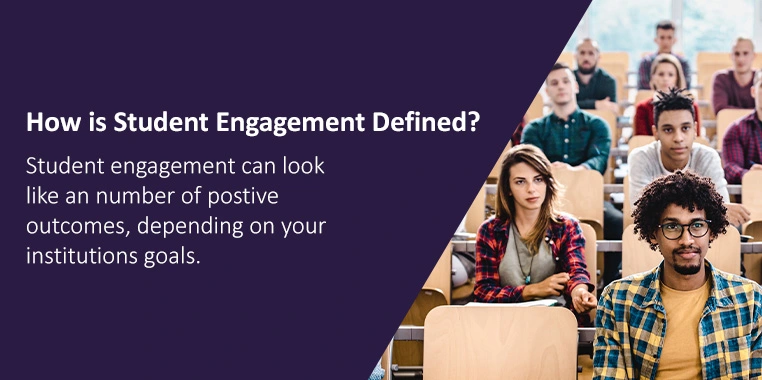
How Is Student Engagement Defined? Student engagement might look like any number of positive outcomes, depending on your institution’s goals.
Student engagement is the overall participation, attention, curiosity, interest, and motivation a student has within the classroom. But student engagement relies on more than just the shoulders of these young scholars.
Teachers have a massive role in developing meaningful engagement with their students. Educators, school leaders, and other adults must cultivate a supportive and stimulating environment. Engagement must start at the top to create a cohesive structure that students are excited to be within. It’s more than just getting them to refocus — it’s about finding the ideal balance to the student’s relationship with their community, leaders, peers, instruction, and curriculum.
Engagement is more than just a student’s focus. It is a multifaceted idea affected by numerous avenues present within their life. A student failing to take notes might have trouble concentrating, but they might also have emotional troubles in their mind, pulling them away from lectures. Because of this possibility, higher ed institutions must address students holistically.
Within a classroom, student engagement can be divided into three distinct categories:
Addressing a holistic version of student engagement might look like any number of positive outcomes, depending on your institution’s goals, improvement strategy, and classroom delivery. For example, you might want to develop actionable plans for improving a course based on student feedback. Your goal might be to see students more active in class participation and specific activities. You might also be looking for ways to increase overall degree and course completion.
Whether long- or short-term, all of these goals require active strategies for engaging students. It takes proactive planning to successfully involve and energize students in the classroom and throughout their time at your institution, from onboarding to graduation. Student engagement relies on strategies for:
Ultimately, driving student engagement helps you improve your higher education institution as a whole by creating a more active atmosphere of growth and support.
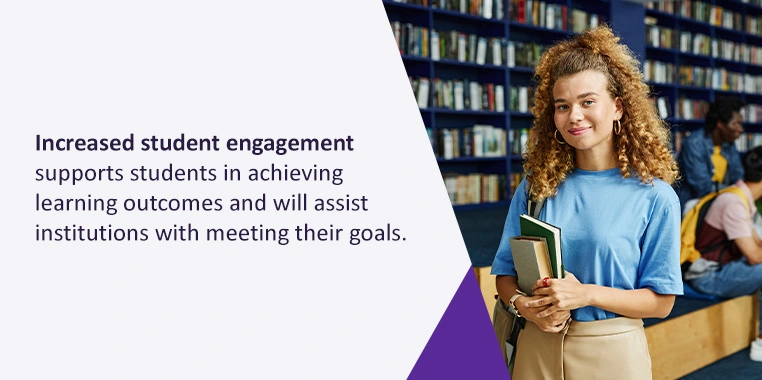
Increasing student engagement turns these scenarios around by supporting students to achieve learning outcomes and assisting the institution with meeting its goals.
Increasingly, higher education institutions are wondering how to increase student engagement on campus. The economic impact of student dropout looms large. Educators and administrators must look for new solutions to distractions, a lack of participation, and the repercussions of lost tuition.
Finding creative ways to engage students leads to many benefits, both in student outcomes and institutional achievement. Increasing student engagement turns these scenarios around by supporting students to achieve learning outcomes and assisting the institution with meeting its goals.
Students also benefit from an institution’s guidance, investment, and support. According to a recent survey of college students from 13 countries, 88% said the quality of faculty played a significant role in student success, while 86% reported that engaging classroom content and hands-on learning opportunities were also vital. Engaged students see academic results in the present and are also 4.5 times more likely to feel hopeful about the future, enjoying long-term benefits of a stimulating environment.
Collecting and assessing data about these types of program-wide metrics through surveying, interviewing, and observing students helps higher education institutions drive institutional improvement. Educators also have much to gain from this information to understand how to alter their own practice and better satisfy their students’ needs.

Student engagement strategies are approaches educators and administrators use in curriculum planning and course delivery to spark student investment in learning. A successful strategy might include tactics ranging from changing course material to updating old assessment methods.
Learn how to improve student engagement with this student engagement strategies list:
Designing a classroom experience that offers students truly valuable information and opportunities can do wonders for increasing engagement. When students feel that their time in the classroom is engaging, challenging, and equipping them to develop new skills, they’ll tackle assignments and opportunities with greater enthusiasm. Making class time more valuable also boosts attendance and degree completion.
Here are some approaches for making time in the classroom the best it can be:
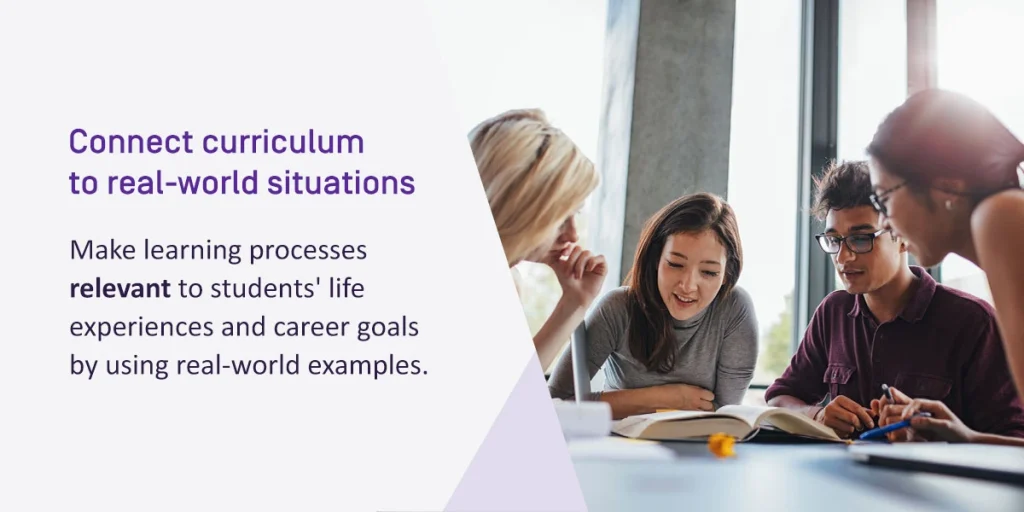
The key to understanding engagement is to realize that every student is unique and engages in different ways. Some thrive in large group settings, while others prefer working one-on-one with classmates or alone. Talk to your students to better understand what’s working and not working for them.
Your students have voices, expectations, and opinions. Listen to student feedback about the classroom experience, the value of the program, and concerns about success to make them feel heard. Perform student assessments often to gather good feedback. End-of-course evaluations are a great way to turn student feedback into tangible improvements. Take advantage of that data to address student needs right away with next steps. You can also use end-of-module and mid-module surveys to determine learning success.
Once you’ve gathered student input, it’s essential to carefully consider it and develop actionable next steps to complete the cycle of engagement. When students feel that their feedback truly makes a difference, they’re more likely to give it consistently and honestly. Assessing feedback also offers administrators a benchmark for measuring your institution’s success and designing future success strategies.
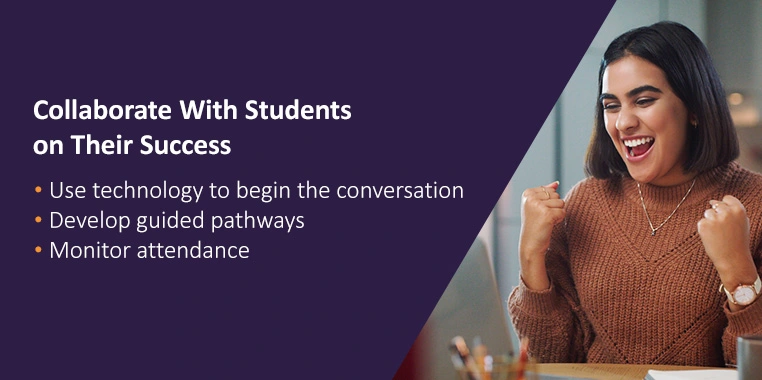
Providing tailored attention to students is one of the best ways to improve student engagement. Students need institutional support as they decide on a career path, tackle the challenges of new courses, and prepare to graduate. While your higher education institution may have counselors for this purpose, assessing student data gives you a clearer insight into success and helps you devise intervention strategies.
An excellent strategy for boosting student engagement involves making education more convenient through technology. By implementing technology tools, you meet the students where they are — online. Many students prefer working on their devices, while others may enjoy communicating online more than in person. Digital learning can help connect students with the instructor, the content, and one another.
Use technology in these ways to promote engagement in and out of the classroom:
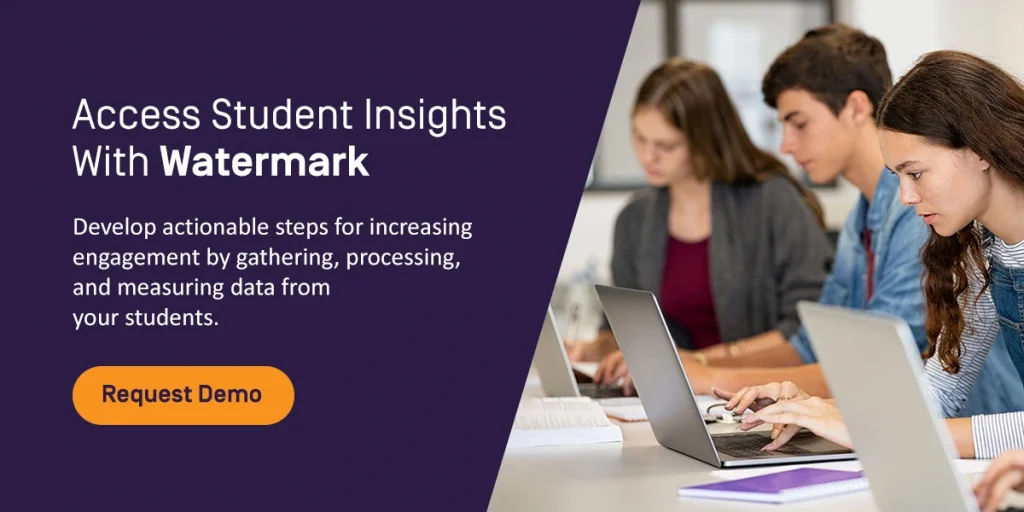
Your higher education institution can do a lot to improve student engagement and meet its goals. Develop actionable steps for increasing engagement by gathering, processing, and measuring data from your students. Tapping into these insights helps you plan for and work toward success.
At Watermark, we provide services that enable higher education institutions to build a picture of student performance, assess programs, and drive continuous improvement. Our solutions help you make sense of the data by delivering intelligent insights and empowering you to develop actionable next steps for improving institutional effectiveness and learning outcomes.
Request a demo of our solutions today to see how Watermark can help your institution and learners thrive.





























































































































































































































































































































































































